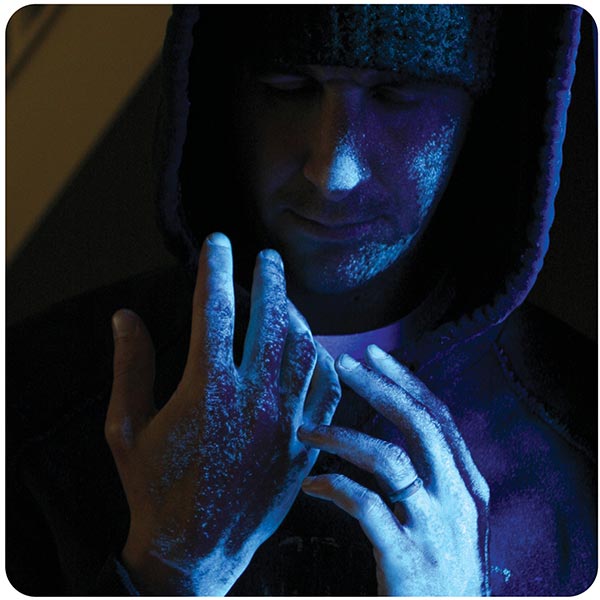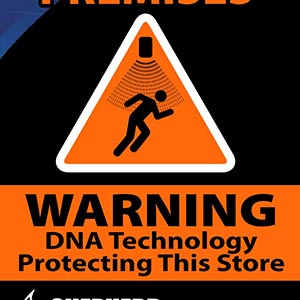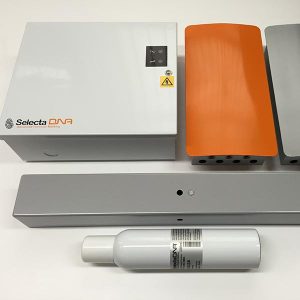
Jewelry stores have a number of high-tech security options available, from alarms to RFID systems and tracking devices. One retailer recently piloted a forensic marking technology with success, highlighting this as one more potential option for jewelers.
In the first case in the Northeastern United States, a technology known as SelectaDNA helped an Albany, N.Y., jewelry store during an April larceny. Truman Jewelers had the technology in place to “tag” a suspect who took an estimated $4,000 in merchandise. The suspect’s hair, skin, and clothing contained a unique forensic code associated with that jeweler, officials said, connecting that person to the larceny.
Albany-based Shepherd Communication and Security installed the SelectaDNA system inside Truman Jewelers as part of a pilot program; it is the exclusive certified dealer for SelectaDNA in the Northeast. Managing Partner Richard Ruzzo says he anticipates additional retailers, especially jewelry stores, will be interested in this case and how the technology works, especially for crime prevention.
“It is particularly impactful as a deterrent,” Ruzzo says. “As people learn about this technology or see a sign in a jeweler’s window, a potential robber may decide your store isn’t the right location to commit a crime. We hope that having such a deterrent has an impact and provides a higher level of safety for jewelers in this country.”
Ruzzo says SelectaDNA’s technology has been used in more than 30 countries over the past 10 years, but it only recently started being used in the United States. The primary focus of the technology is crime prevention, he says, with a documented reduction in robbery, burglary, and theft by an average of 40% to 86% where it is deployed.

The forensic marking, or synthetic DNA, is applied using a water-based, nontoxic solution that is invisible and remains on a suspect’s skin or clothing for months after being misted, allowing authorities to scientifically identify them after a crime is committed. SelectaDNA also is available in kits that can track its tags on individual items, such as jewelry within a store or at an individual’s home, for up to five years.
Ruzzo says he also hopes in a pandemic setting where legitimate clients are masked and not as easily recognized, having something like a tagging system is a valid new option for identification of suspects. In the Truman Jewelers case, the SelectaDNA system was installed alongside the store’s alarm system.
“When you trigger the system, it spritzes the individual in the doorway or in a corridor, wherever the system has been installed,” Ruzzo said. “Now, you can provide that unique [SelectaDNA] code to law enforcement in addition to a video or witness statements.”
The costs are similar to that of traditional security systems, Ruzzo said, running around $2,500 for his region. Individual store costs may vary due to the number of units installed and the cost of replacing the SelectaDNA canisters. Individual tagging kits run around $185-200.

Jewelers’ Security Alliance (JSA) president John Kennedy says he applauds the capture in the Albany case and the technology in general.
“This [technology] has its place, but there are limitations,” Kennedy says. “I know the company, and we take the product seriously. But for it to be a deterrent, there has to be notices about it, which may be negative to consumers. For it to be effective, you actually have to catch the people. … It is limited in a sense that the only thing you can hope for is you’re going to have a sophisticated group of people who know what its signs are about.”
Moreover, the nation’s 17,000 police departments would need to be informed on how to use it, he adds. Still, Kennedy says, if more jewelers add it to their existing security systems, this kind of DNA technology could be helpful.
In its 2019 report, the most recent year available, JSA reported that crimes against U.S. jewelry firms continues to increase. For example, the total dollar losses from crimes against U.S. jewelry firms rose from $53.4 million in 2018 to $101 million in 2019, an increase of 89.1%. The total number of crimes remained about the same, with 1,438 crimes committed in 2019.
To date, the SelectaDNA technology also is inside four other U.S. jewelry stores, including Richard Mille on Billionaire’s Row. In the Truman Jewelers case, the Albany Police apprehended the alleged perpetrator and were able to detect the forensic mist on his person using a special frequency UV light, officials said. That evidence is now available to prosecutors as the case moves forward in the local legal system.
Truman Jewelers owner Paul Crabbe said in a statement that his goal in using the new technology is to create “a safe and secure environment in which my customers can shop and my staff can work with peace of mind. … This technology provides an added layer of protection, and combined with our proactive policies and the professional work of our law enforcement agencies, ensures we can focus on doing business and contributing to our community.”
TOP: This illustration of SelectaDNA forensic spray pattern from the Criminal Tagging System is similar to what is installed at Truman Jewelers. (Courtesy of CSI Protect)
Follow JCK on Instagram: @jckmagazineFollow JCK on Twitter: @jckmagazine
Follow JCK on Facebook: @jckmagazine





